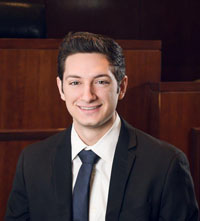The Department of Justice’s (“DOJ”) Foreign Corrupt Practices Act (“FCPA”) enforcement efforts ended 2017 with a bang on December 22, when the United States Attorney’s Office for the Eastern District of New York and the DOJ Fraud Section announced $422 million in criminal penalties against Keppel Offshore & Marine Ltd and its U.S. subsidiary (“Keppel USA”). The enforcement action ranks seventh all-time in the history of the FCPA based on the assessed penalties.
According to the deferred prosecution agreement (“DPA”), Keppel, a Singapore-headquartered offshore rig and shipbuilding company, paid $55 million in bribes to officials at Petrobras, Brazil’s state-owned oil company, and the Workers’ Party of Brazil. The bribery scheme spanned from 2001 to 2014, helped secure a dozen contracts, and earned the company $351.8 million. Like so many FCPA cases, the bribes were effectuated through consultants, not directly by Keppel employees. However, Keppel and Keppel USA executives allegedly created and executed agreements with the consultants intended to facilitate the bribe payments and conceal their purpose. The DPA quotes emails from Keppel executives establishing that the company’s senior officials were aware that the funds paid to the consultant would be used to bribe Brazilian officials.
The DOJ’s key source of information against Keppel appears to have been Jeffrey Chow, an American citizen who had worked for Keppel as in-house counsel in Singapore for over 25 years. Chow had secretly pleaded guilty on August 29, 2017 to violating the FCPA as part of his cooperation deal with prosecutors. While Keppel entered the DPA, Keppel USA pleaded guilty to violating the anti-bribery provisions of the FCPA. In addition to the $422 million in criminal fines Keppel agreed to pay pursuant to the DPA, Keppel USA was fined an additional $5 million as part of its plea agreement. According to the agreements, the defendants engaged in extensive remedial measures, including terminating, disciplining, and financially sanctioning company employees involved in the scheme. Interestingly, the criminal penalties under the DPA are to be split among the Brazilian ($211 million), Singaporean ($105 million), and U.S. ($105 million) governments.
Aside from the sheer dollar value, there are several things worth highlighting about the Keppel case. First, despite President Trump’s public pronouncements against the FCPA and its enforcement, Keppel demonstrates the current DOJ leadership’s willingness to bring significant anti-corruption cases. However, as only two of the top-ten FCPA enforcement actions of all time involve United States-headquartered companies (KBR/Halliburton in 2009 and Och-Ziff in 2016) one can question whether the Trump Administration will focus FCPA enforcement actions increasingly on foreign corporations as compared to past administrations.
Second, Chow’s secret guilty plea and ensuing cooperation with the DOJ’s investigation highlights how the DOJ’s increasing focus on individual criminal liability can help build larger corporate cases. The DOJ has stated that this focus will continue in 2018.
Third, and finally, the Keppel case is the latest in a series of recent cases in which the investigation and settlements have been multilateral in nature. The DOJ has been structuring settlements to allow payments to be made to governments in countries where the bribery occurred or the company is headquartered. The Telia Company’s nearly one billion dollar resolution in September 2017 was spread across the United States, Sweden, and the Netherlands.
2017 was an unprecedented year in terms of FCPA enforcement. There is no reason to believe that enforcement in 2018 will be any less significant.




 HIA-LI says that the park’s economic impact could grow if people could also live there.
HIA-LI says that the park’s economic impact could grow if people could also live there.
 by David Winzelberg
by David Winzelberg Ronkonkoma, NY –
Ronkonkoma, NY – 
 Compiled by Adina Genn
Compiled by Adina Genn Sexual Harassment in the Workplace: Steps Employers Should Take Now
Sexual Harassment in the Workplace: Steps Employers Should Take Now Ronkonkoma, NY – Campolo, Middleton & McCormick, LLP, a premier law firm with offices in Ronkonkoma and Bridgehampton, is pleased to welcome
Ronkonkoma, NY – Campolo, Middleton & McCormick, LLP, a premier law firm with offices in Ronkonkoma and Bridgehampton, is pleased to welcome